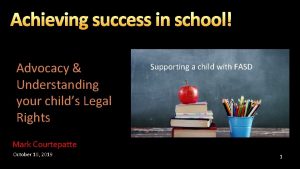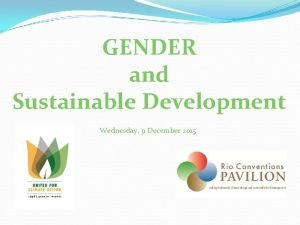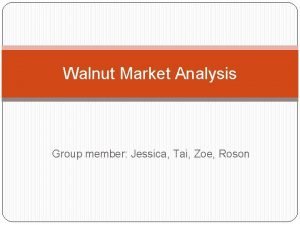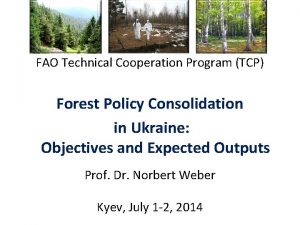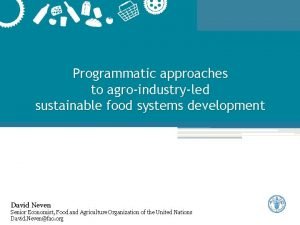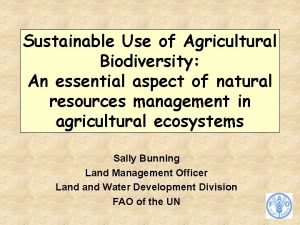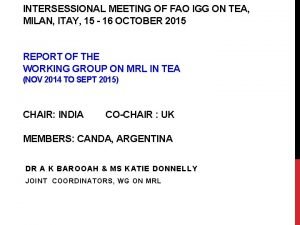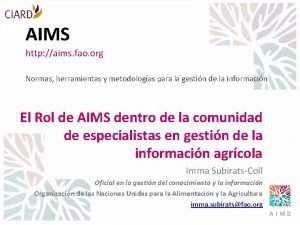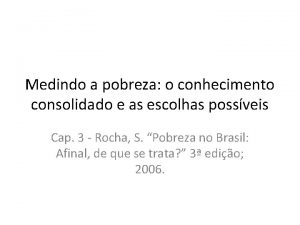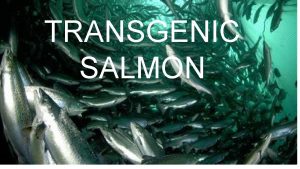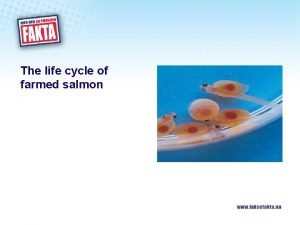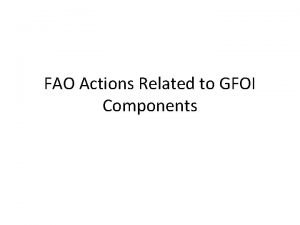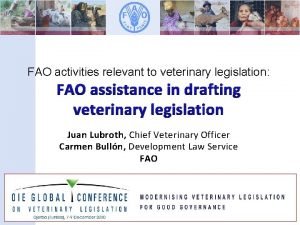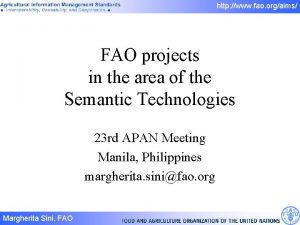Farmed Salmon A success story Jogeir Toppe FAO












- Slides: 12

Farmed Salmon A success story Jogeir Toppe, FAO; Zadar, 6 June 2013

First signs of fish faming in Egypt > 4000 years ago

40 years of farming Salmon • 1970: Commercial farming of Salmon started in Norway • 1973: Regulations were introduced to ensure farming of salmon would benefit coastal communities rather than big industrial actors. • 1974: Overproduction; salmon frozen and stored to regulate market prices. • 1978: New licenses for fish farming stopped temporarily. • 1983: Diseases become a major problem.

Use of antibiotics in Salmon farming

“Project Japan” • In 1986 Norwegian Salmon was introduced for sushi in Japan. • Export to Japan increased with 250% in five years! • Today about 50% of all Salmon is eaten raw!

The Norwegian Seafood Council • Owned by the Ministry of Fisheries and Coastal Affairs • Funded by the industry (export tax) • Objective: Increase demand for Norwegian Seafood • Implements some 500 marketing projects every year • “The best seafood in the world comes from Norway”

Reputational risk management • Safeguard and strengthen the image of Seafood • Ready to contribute to social debate with accurate, updated information

Negative views on Fish Farming from Public space; not always science based. . . Examples on farmed salmon. . . : 1. Salmon Are Smart Fish learn even faster than dogs Like to play, investigate new things, and hang out with friends 2. Arsenic and Old Waste Extremely high levels of chemicals such as arsenic, mercury, PCBs, DDT, dioxins, and lead 3. Harm at the Farm Killing off wild fish populations Takes 5 pounds of commercially caught fish to produce 1 pound of farmed fish 4. Sea Lice Aren't So Nice Eats down to the bones on a fish's face Live their entire lives with as many as 27 fish in a space the size of a bathtub

5. Slammin' Salmon Use bats to beat large salmon to death 6. Open Waters Are Open Sewers Massive amount of raw sewage, dead fish corpses, and antibiotic-laden fish food sludge settling below farmed salmon cages 7. Breeding Brain Damage Studies have also shown that children born to mothers who eat fish are slower to talk, walk, and develop fine motor skills and have weaker memories and shorter attention spans 8. Don't Forget About the PCBs Scientists have proved that people who eat only two servings of fish a month have difficulty recalling information that they learned just 30 minutes earlier.

9. For Your Health The Environmental Working Group estimates that 800, 000 people in the U. S. face an excess lifetime cancer risk from eating farmed salmon. Plus, salmon flesh contains high amounts of artery-clogging cholesterol and fat. 10. Faux Fish If you're "fishing" for a heart-smart diet that has been proved to actually reverse heart disease while also reducing the risk of cancer, diabetes, and obesity and that is good for the environment as well as fish-friendly-a vegetarian diet is the perfect catch

Two different views. . . Our People and Our Salmon http: //www. youtube. com/watch? v=vj. Ab. V 1 hjyi 0&feature=endscreen&NR=1 Farmed Salmon: Unhealthy and Unsustainable http: //www. youtube. com/watch? v=1 YD 9 KDE 92 J 8

THANK YOU ! jogeir. toppe@fao. org



